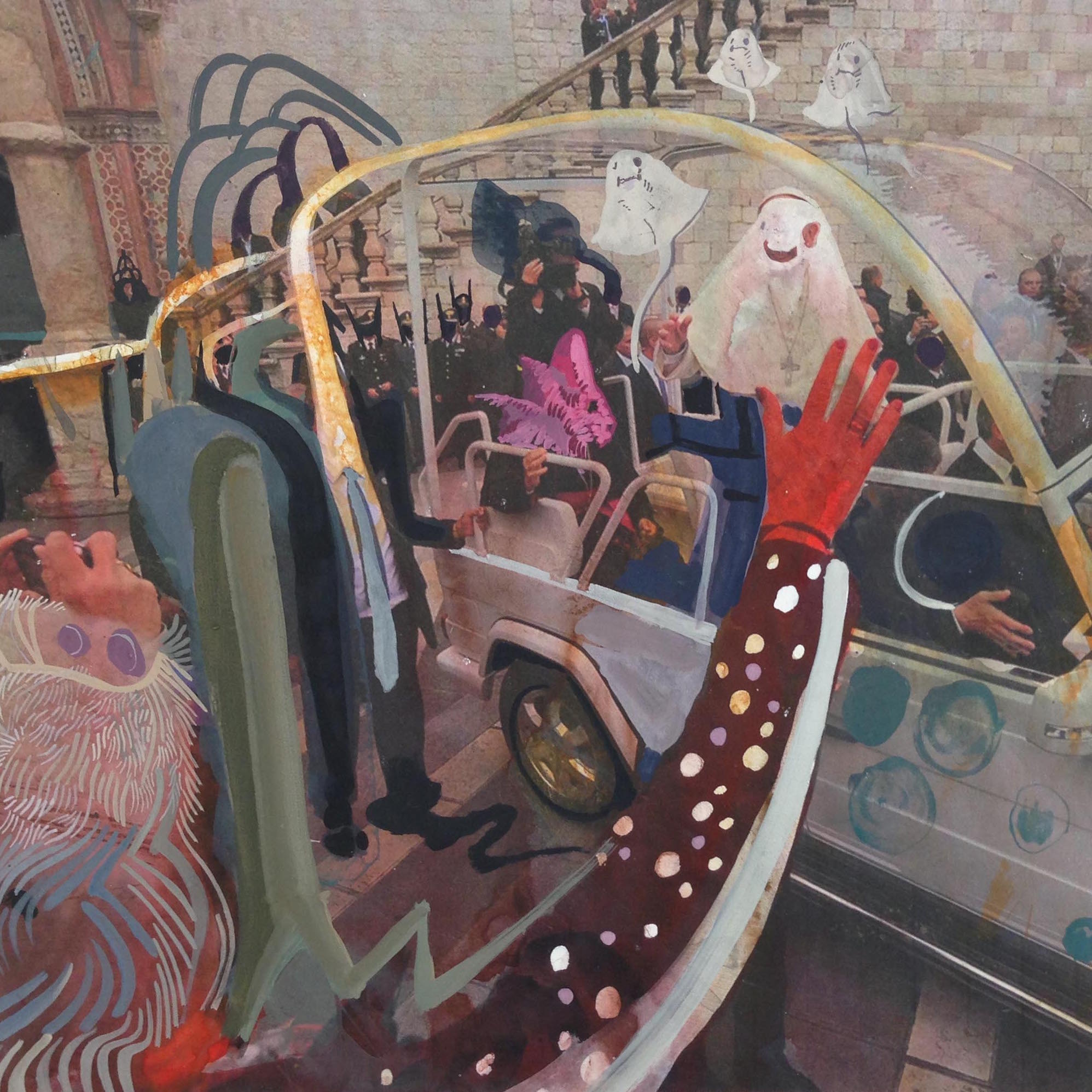Exploring art as a subversive practice amongst contemporary MENA artists at the Guggenheim
It was an uncomfortably hot and typical Brisbane afternoon as I made my way across the concrete courtyard from the Gallery of Modern Art to its big sister, the Queensland Art Gallery. There is something rather exciting about the potential of Middle Eastern art in Australasia, although its relative invisibility has been something problematic; the Asia Pacific Triennial is one of the few large-scale exhibitions in the southern hemisphere featuring artists from the Arab world, Turkey, Iran, and Southeast Asia. Entering the gallery, I was still slightly agitated from the humidity, and as I moved forward through the much cooler interior and the sparse, slowly moving crowd, my senses suddenly awakened. It was an unexpectedly frantic space, every single inch of it: the floors, walls, and ceiling were smothered in a full-scale recreation of Rokni Haerizadeh’s studio in Dubai, which he shares with his brother, Ramin, and their friend Hesam Rahmanian. The entire first gallery, in fact, was dedicated to their collaborative installation, All the Rivers Run into the Sea. Over./Copy. Yet, the Sea is not Full. Over.
The exhibition arguably contained everything one would expect from the Haerizadehs and Rahmanian. After examining each piece, I was left wondering what the vastly Anglo-Saxon audience made of the highly political and otherworldly spectacle. My presence in the installation as a pseudo-Arab/Middle Eastern/you-must-be-somewhere-from-the-East person created a strange friction as passersby asked, ‘Can you read that?’, or, ‘Does that offend you?’ Standing in my hijab, I was a lone figure suddenly cast as a translator, oracle – miracle – in a physical space where everything surely meant something political, or was at least a push back against the fanatical or oppressive.
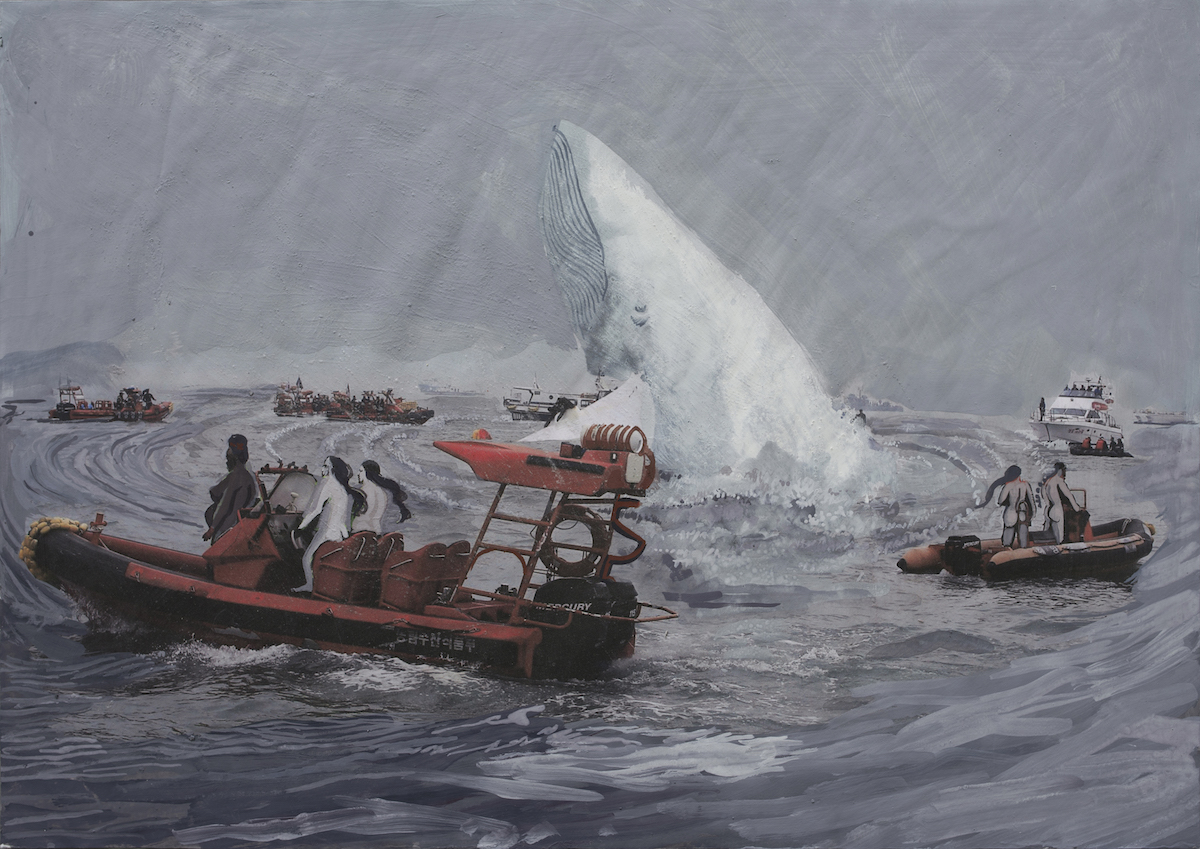
Rokni Haerizadeh - But a Storm is Blowing from Paradise (© the artist; photo by Ramin Haerizadeh; courtesy the Solomon R. Guggenheim Museum)
Fast-forward six months, and Rokni Haerizadeh suddenly entered my world again (or rather, I his); only this time, we met on my laptop screen. Unlike my experience at the Queensland Art Gallery, I was not distracted by the cacophony of images, brute sculptures, or the aesthetic mayhem of stepping inside a fully immersive Haerizadeh installation. I was completely devoid of any spatial stimulation, and became immediately aware of my non-presence. I internalised and had some time to reflect upon the contextualisation of the artworks, as well as the title of the ongoing exhibition at the Guggenheim Museum in New York City, But a Storm is Blowing from Paradise. I was immediately drawn towards the writings of Walter Benjamin and his interpretation of Paul Klee’s 1920 oil monoprint, Angelus Novus (New Angel). In the ninth thesis in Theses on the Philosophy of History, Klee’s work seems to have inspired in Benjamin an urgent sense of disaster and an unending catastrophe; the Angelus Novus is caught up in a storm whose force makes it unable for him to close his wings.
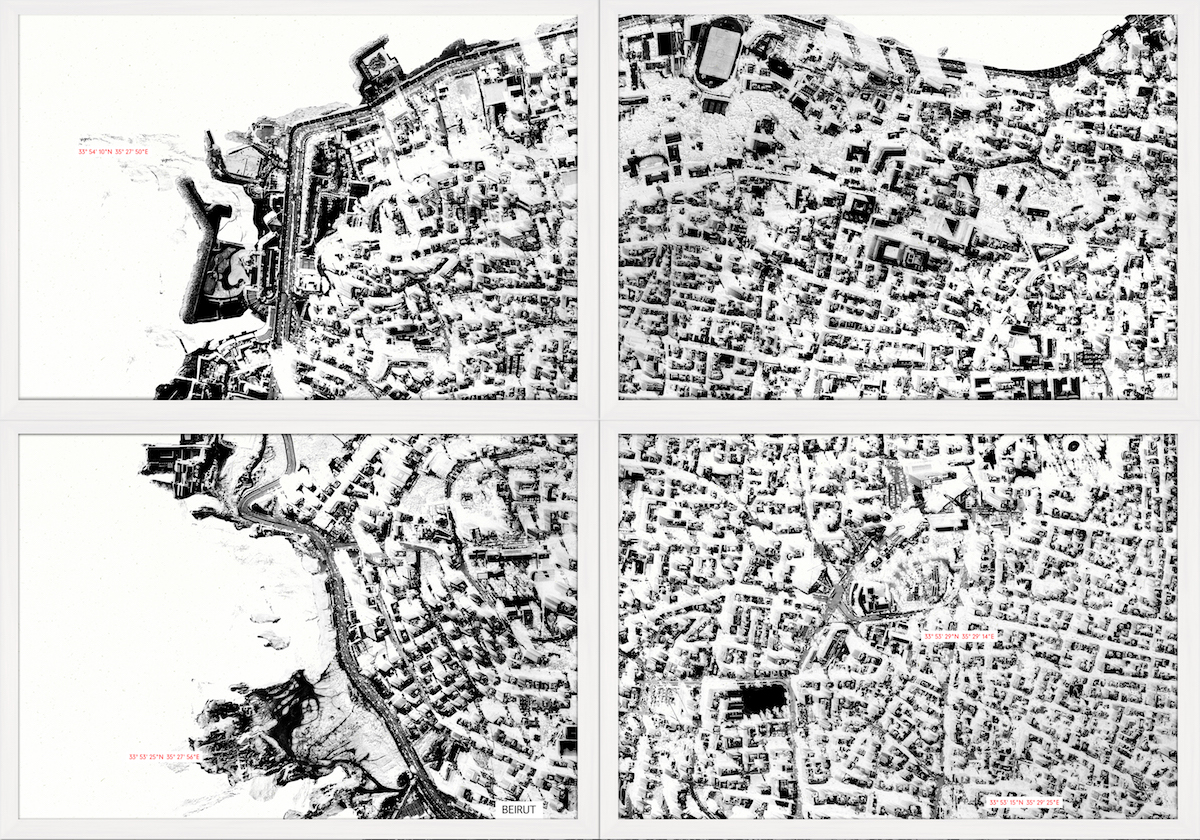
Ali Cherri - Trembling Landscapes - Beirut (© the artist; courtesy the Solomon R. Guggenheim Museum)
In my mind, I reinvented the context from which Benjamin extracted this work, and momentarily extended it, experientially, to that of the current state of the Middle East. With that, I began to conjure up images of a prayer or a curse, as supplicated for by the oppressed. But a Storm is Blowing from Paradise: trouble is surely brewing now, and there is an impending danger looming from the heavens to exact retribution for all earthly wrongs; a storm of sorts is about to whisk down. Everything seems so fractured and broken in Benjamin’s account. He relays a history that propels one into a non-negotiable and catastrophic future, unlike Haerizadeh in his 2014 piece that served as the namesake for the exhibition; his piece has a quasi-mythological twist that somehow undermines the notion that facts alone should account for history. I took the sentiment of Haerizadeh’s work as a thread, with which I began to view the remaining contributions to the exhibition.
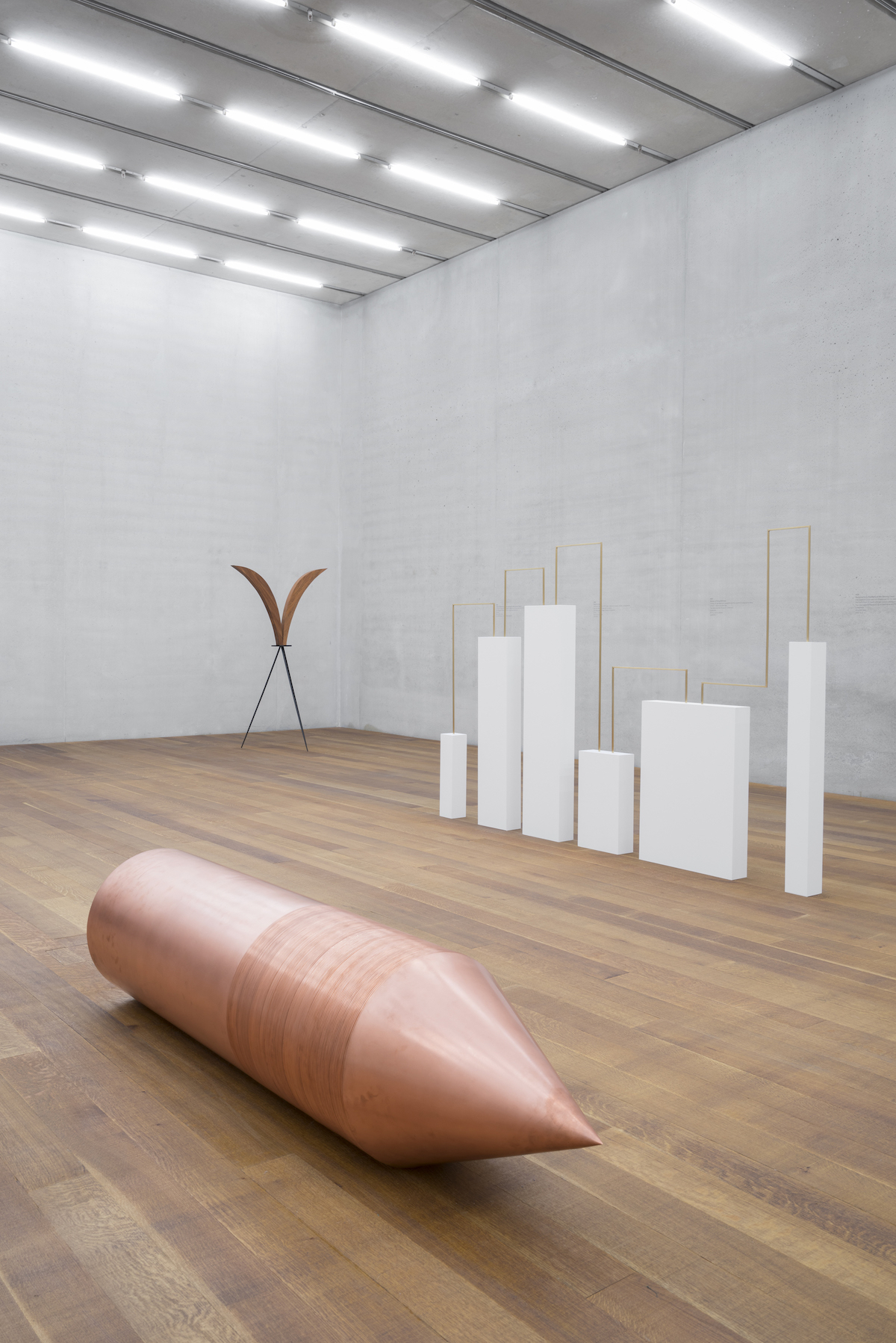
Iman Issa - Heritage Studies No. 10 (© the artist; photo by Studio LHOOQ; courtesy the Solomon R. Guggenheim Museum)
The striking selection of works chosen by curator Sara Raza and her intent to present art from – and for – the Guggenheim’s collection that will one day be read beyond current geopolitical constraints, is almost compulsive in its narrative. Raza presents a case for the artist as a radical container of culture and ideas, who permeates (and illuminates) the human condition in a type of time capsule that has the potential to change a future understanding of the history that is currently being made.
This notion of art as a subversive practice is not new; however, redefining the material itself as the place from which ideas are ‘smuggled in’ is certainly compelling
Raza explained to me the importance of the exhibition in terms of collecting artists for the future of the Guggenheim’s UBS MAP programme, as well as in relation to the social and historical cultural milieu of generations to come: ‘With regard to shifts in the socio-political landscape,’ she said, ‘I do not think that in the future, ideas around logic, space, and migration will still be relevant, as populations increase and economies grow – though the experience will alter due to the advent of new technologies and sciences’. An ambitious collection of 20 artists and 27 artworks were acquired for the programme, with 17 artists and 18 artworks being exhibited at the Museum. ‘In planning the project, it was necessary to look at the contemporary moment, [as well as backwards] and forward’, Raza remarked. ‘One of the Guggenheim’s core principles of collecting and displaying [includes the] art of our time; and with that notion in mind, the narrative I was creating was a contemporary story.’
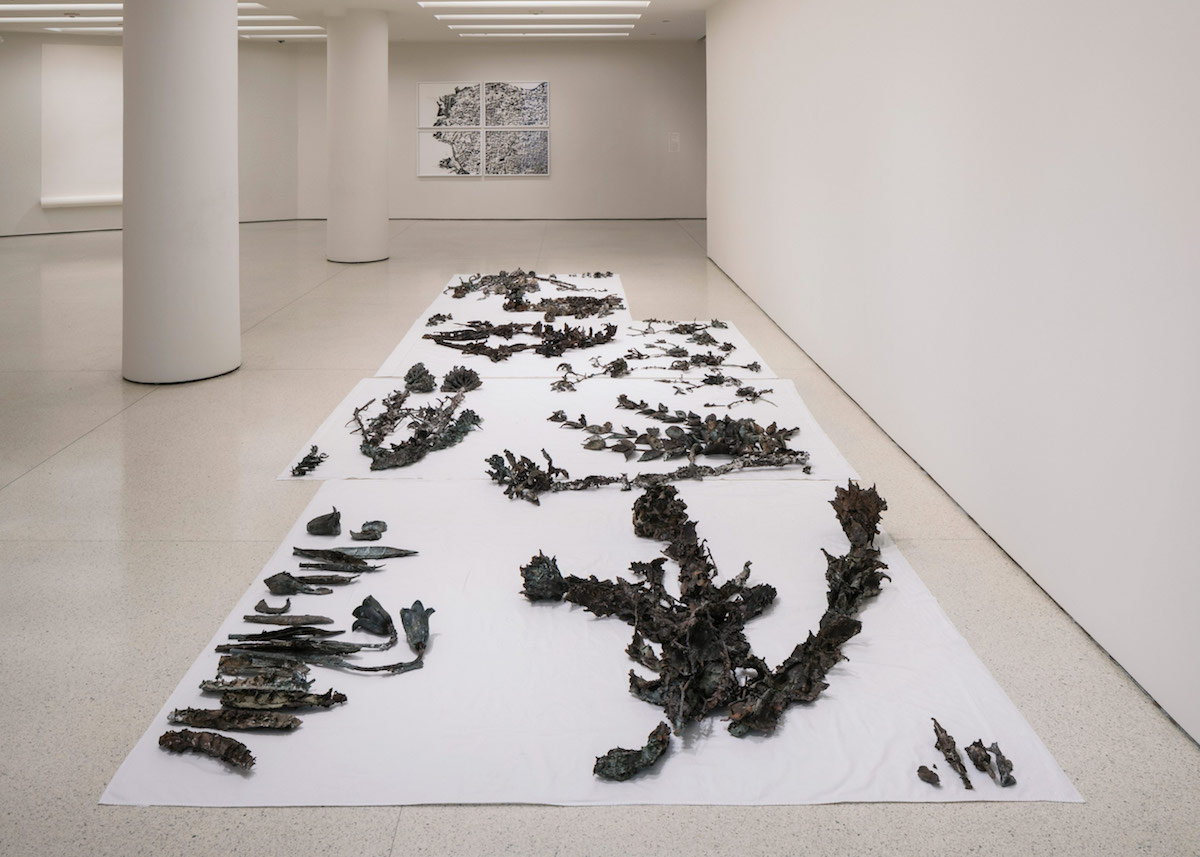
Abbas Akhavan - Study for a Monument (photo by David Heald; courtesy the Solomon R. Guggenheim Museum)
Raza tackles monumental themes through the exhibition, and there is a deliberated process in her collection of works – thematically and chronologically – in relation to particular artists. ‘I also looked to see where I could acquire more works by artists of the region that were already in the collection’, she commented, ‘like Joana Hadjithomas and Khalil Joreige and Ori Gersht, to highlight the evolution of their practices’. Through their practice, the Lebanese artists Hadjithomas and Joreige have straddled filmmaking with other genres to create installations such as Latent Images. This piece draws on the photography of a fictional character (Abdallah Farah), and alludes to the violence, displacement, and upheaval of war, with the appearance and disappearance of images becoming the focal point. Farah and the notion of fiction as a valid historical narrative bring one back again to Haerizadeh – and the connection begins to reveal something overwhelming in the potential ways in which this generation could be marking the future.
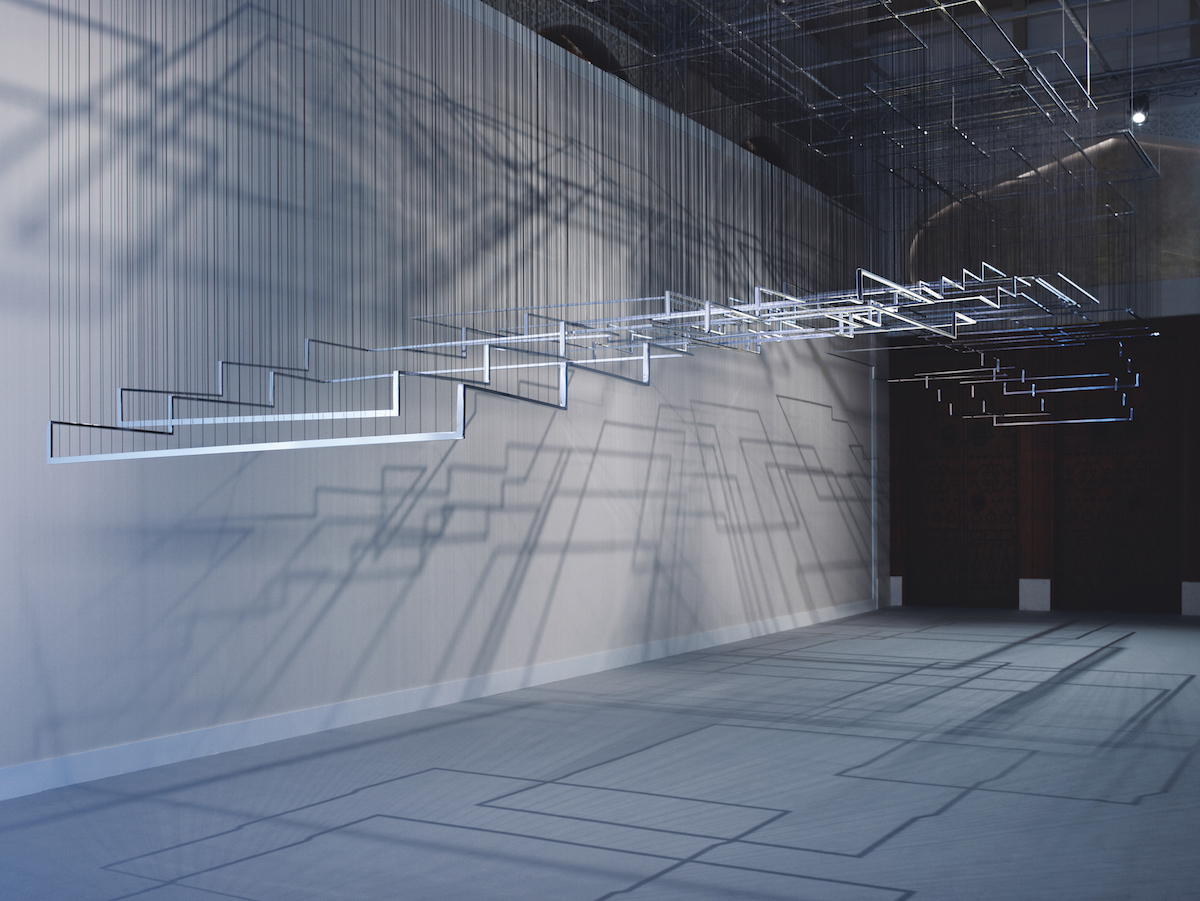
Nadia Kaabi-Linke - Flying Carpets (© the artist; photo by Thomas Brown; courtesy the Solomon R. Guggenheim Museum)
There are multiple avenues from which the exhibition enters the current sociopolitical landscape. Themes of migration and movement, architecture, and colonialism play out through a variety of mediums, in what Raza described as a ‘conceptual contraband’. This notion of art as a subversive practice is not new; however, redefining the material itself as the place from which ideas are ‘smuggled in’ is certainly compelling. For one whose research spans fine art, the philosophy of the book as an object, and subversive practices amongst Arab and Muslim artists in the diaspora, the exhibition is exceptionally relevant, especially in the case of the ephemeral work of the French-born Algerian artist Kader Attia. In his 2009 work Untitled (Ghardaïa), Attia deliberately utilises couscous, a North African staple food, to model the ancient Algerian town. This piece, a precise recasting of the buildings in his mother’s traditional couscous recipe, touches on something quite profound. It references not only Le Corbusier’s silence on the influence of Ghardaïa on his architecture, but also the complexity of the relationship between the coloniser and the colonised. Attia’s work illuminates the Other’s denial of having been influenced, and subversively points to civilisation as not exclusively being the domain of ‘white’ Europe. The couscous, in all its material simplicity, opens a dialogue that attests to the intricacy of the culture and ideas of a people who actively influenced the ‘West’. The piece also has within it a satirical dinner invitation to Le Corbusier and his contemporary Pouillon, which is humorously accentuated in the hanging of the portraits of both architects on a wall in view of the transient couscous installation.
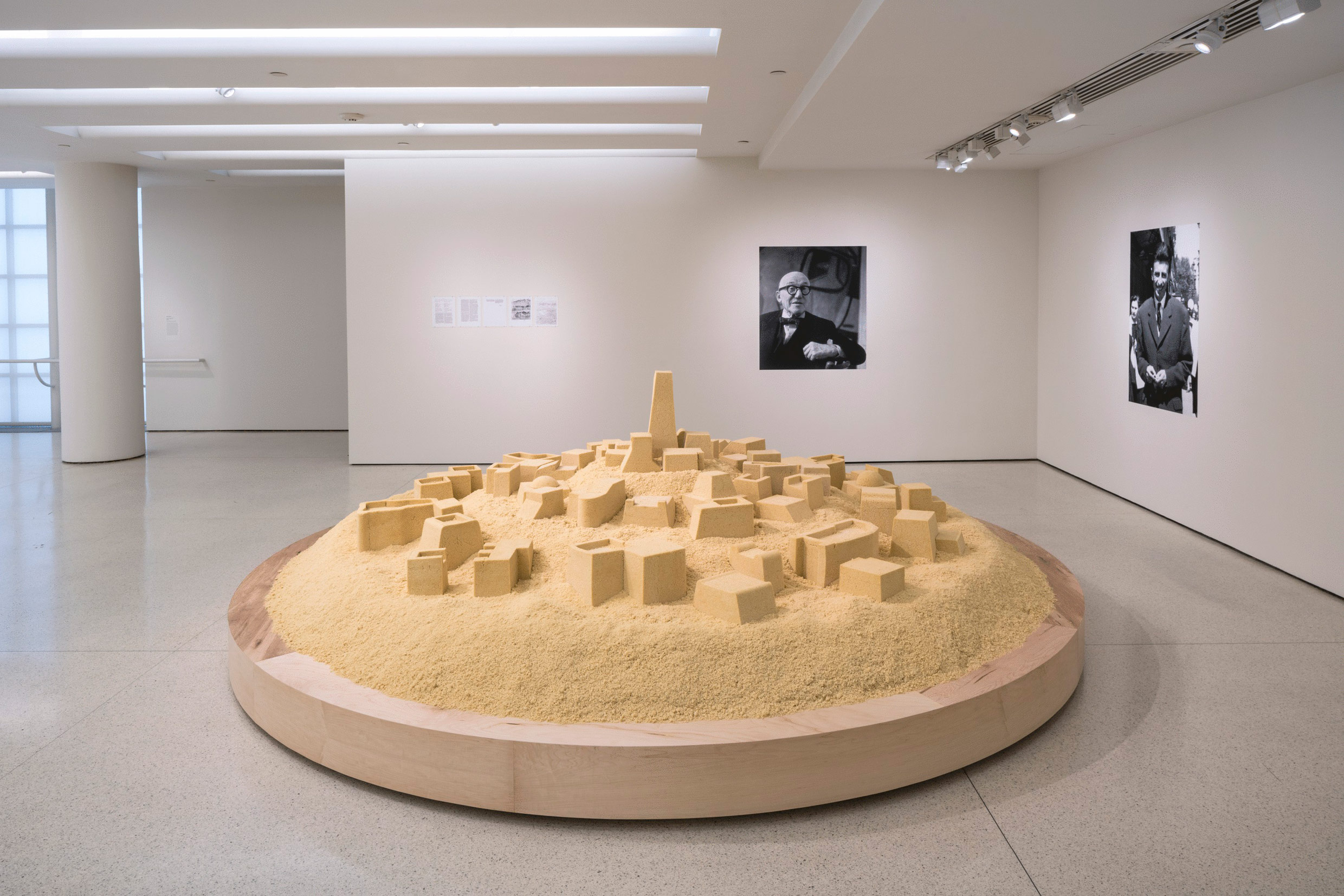
Kader Attia - Untitled (Ghardaïa) (Photo by David Heald; courtesy the Solomon R. Guggenheim Museum)
Like the works of Rokni Haerizadeh and Kader Attia, the others in the exhibition deliver powerful messages quietly and eloquently, through conceptually sound ideas and carefully selected materials, which in their many meanings and layers challenge colonised history. Subverting that history to include other versions of ‘truth’ might in fact change the way in which one enters the future – wherein perhaps Benjamin’s catastrophic reading of Klee’s Angelus Novus will once again be reimagined.
‘But a Storm is Blowing from Paradise: Contemporary Art of the Middle East and North Africa’ runs through October 15, 2016 at the Guggenheim Museum in New York City.
Cover image: Rokni Haerizadeh - But a Storm is Blowing from Paradise (detail; © the artist; courtesy Gallery Isabelle Van Den Eynde).
